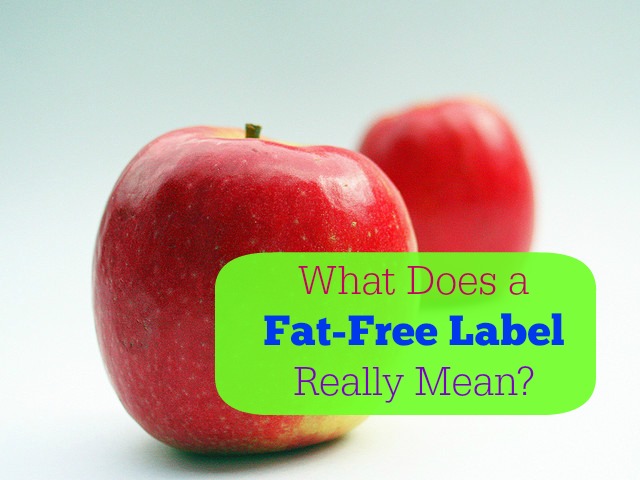Fat-free is a term that many of us are very familiar with. We see ‘fat-free’ on our food labels and we seek it out on the foods we love to eat.
What Does ‘Fat-Free’ Mean?
There’s an assumption that fat-free actually means free of all fat. Well it doesn’t. The label that reads ‘fat-free’ can actually be very misleading.
The FDA permits foods to be labeled ‘fat-free’ if they contain less than 0.5 grams of fat per serving.
Here’s the tricky part. If you eat over and above the serving size on the package chances are the food will no longer be fat-free. And we all know how small those serving sizes tend to be on a food label. Most are very unrealistic.
For example let’s pretend we are about to indulge and eat a fat-free, chocolate chip cookie for lunch. The label on the cookie packaging states that the serving size is 1 tasty cookie. We all know that it’s next to impossible to eat only one cookie. So now we add two more cookies to our lunch-time treat. While each cookie has under the 0.5 grams fat content to legally be called fat-free, when added together they exceed that amount. Those cookies are no longer fat free.
Does ‘Fat-Free’ Mean Calorie-Free?
Fat-free does not mean calorie-free. Not all calories are created equal, but it still holds true that a calorie is a calorie whether it comes from fat or carbohydrates. Packaging can say a product is fat free, but it could be loaded with sugar. Check labels carefully for calorie count and serving size.
Sometimes It’s OK to Eat a Little Fat.
The type of fat you eat may be more important than the amount of fat you eat. When choosing your foods think about finding sources of good fat, not necessarily fat-free foods. Bad fats in food can increase your cholesterol and your risk of heart disease. Consuming foods with good fat will help keep your heart and body healthy. Omega-3 fats are an example of good fats and can be found in Chia seeds [2], salmon [3] and other fish [4] and Brussels sprouts [5].
Best solution: Eat everything in moderation, do your best to stick with fruits and vegetables which are naturally low in fat and try to avoid processed foods as much as possible.
What do you think of the fat-free label? Is it important to you when you’re buying food?
photo credit: MyDigitalSLR [6] via photopin [7] cc [8]
